I’ll be honest—when I started shopping for windows, I was overwhelmed. But after months of research and hands-on experience, I landed on Pella Impervia fiberglass windows, and let me tell you, they’re a game-changer.
These windows combine sleek style, durability, and energy efficiency that make them worth every penny. Whether you’re upgrading your home or building from scratch, Pella Impervia windows deliver a modern look with performance that stands up to the toughest conditions.
Trust me, you’ll want these in your home, and I’m excited to share why.
My Experience With Pella Impervia Windows
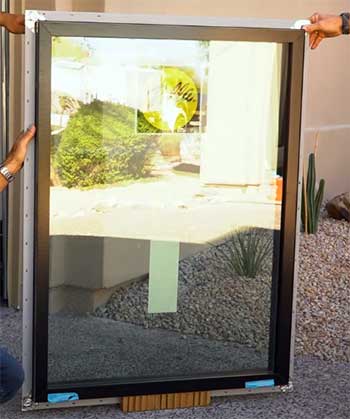
When I decided to replace the old, drafty windows in my 20-year-old home, I wanted something that looked sharp but could handle the brutal Midwest winters and scorching summers.
After visiting a local showroom and chatting with a Pella rep, I was sold on the Impervia line.
The sleek, modern design caught my eye immediately—those clean lines and slim profiles screamed sophistication.
I went with the black finish for a bold, contemporary vibe, and I haven’t looked back.
Installation was a breeze, thanks to the Pella-certified contractor I found through their website. The team was professional, though I’ll admit they left a bit of a mess (more on that later). Once the windows were in, I noticed an immediate difference.
My living room felt quieter, even with the neighbor’s dog barking nonstop. The triple-pane glass option I chose made my home feel like a fortress against the elements. Last winter, I barely cranked the heat, and my energy bills dropped noticeably—about 15% less than the previous year. That’s real money back in my pocket.
I also love how easy they are to operate. The casement windows glide open smoothly, and the double-hung ones tilt in for cleaning, which is a lifesaver for my two-story home. I did have one hiccup—a window stuck slightly due to some weatherstripping, but a quick call to Pella’s support team got it fixed under warranty.
Overall, living with these windows has been a delight. They’ve transformed my home’s look and feel, making it cozier, quieter, and more energy-efficient. Now, let’s break down why these windows are so great and where they fall short.
Pros of Pella Impervia Windows
- Unmatched Durability with Fiberglass

Pella’s proprietary fiberglass, which they call Duracast, is no joke.
I’ve seen claims that it’s strong enough to lift a 6,600-pound truck, and while I haven’t tested that myself, I believe it.
These windows are built to withstand extreme heat, sub-zero cold, UV rays, and even coastal salt air.
Living in an area with wild temperature swings, I appreciate that they don’t warp, crack, or fade like vinyl or wood might.
I’ve had them for over a year, and they still look brand new, even after a brutal hailstorm.
- Sleek, Modern Design
If you’re after a window that screams “I’ve got style,” the Impervia delivers. The slim profiles and large glass surfaces maximize natural light, making my rooms feel bigger and brighter. I went with the black exterior, which gives my home a bold, contemporary edge.
You can choose from a handful of colors, including a rich bronze that I almost picked. The grilles-between-the-glass option adds a custom touch without the hassle of cleaning individual panes. It’s the kind of design that makes your neighbors jealous.
- Energy Efficiency That Saves Money
Let’s talk numbers. The Impervia’s double-pane models have a U-value around 0.33, which is decent, but I splurged on the triple-pane upgrade, and it’s hitting as low as 0.22. That’s serious insulation.
My home stays cool in the summer and warm in the winter, and I’ve noticed my HVAC isn’t working overtime anymore. Pella claims these windows meet ENERGY STAR guidelines in all 50 states, and I can vouch for that. My utility bills are proof—this upgrade pays for itself over time.
- Versatile Style Options
You’ve got options galore with the Impervia line. Whether you need double-hung, casement, awning, or sliding windows, they’ve got you covered. I mixed and matched styles to fit my home’s layout—casements for the living room, double-hung for the bedrooms.
You can even get custom sizes down to a quarter inch, which was perfect for my quirky, older home. The ability to paint the fiberglass is a bonus, though I stuck with the factory finish for low maintenance.
- Solid Warranty Coverage
Pella’s warranty gave me peace of mind. The Duracast fiberglass frame comes with a limited lifetime warranty, while the glass gets 20 years, and the paint finish is covered for 10. I had a minor issue with a window’s hardware, and Pella’s support team was quick to send a replacement part.
The warranty is transferable too, which is a big plus if I ever sell my home. It’s not the simplest warranty to navigate, but it’s robust enough to make you feel protected.
Not-So-Good Parts of Pella Impervia Windows
- Higher Price Point
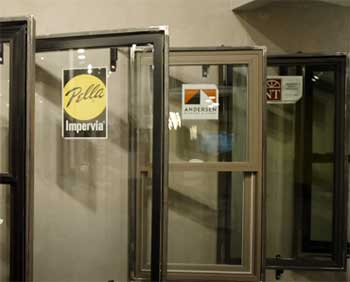
Let’s not sugarcoat it—these windows aren’t cheap.
I paid around $1,000 per window installed, which is steeper than vinyl options like Pella’s 250 Series or competitors like JELD-WEN.
Compared to Marvin’s Essential line, which came in about 15% cheaper for a similar fiberglass window, the Impervia felt like a splurge.
If you’re on a tight budget, you might wince at the price tag, especially for larger projects. I justified it by focusing on the long-term savings and durability, but it’s a hurdle for some.
- Inconsistent Installation Experiences
While my installation went smoothly overall, I’ve heard horror stories from others. One neighbor complained about a messy install crew who left debris everywhere, and online forums mention similar issues.
My crew was great, but they did track some dirt into my house, which was annoying. Pella doesn’t offer in-house installation like Andersen’s Renewal line, so you’re at the mercy of local contractors. It’s worth vetting your installer carefully to avoid headaches.
- Mixed Reviews on Frame Strength
I love my Impervias, but some contractors I spoke with called the frames “flimsy” compared to competitors like Marvin Infinity or Milgard Ultra. I haven’t noticed any weakness myself—the windows feel solid—but the air infiltration rate of 0.18 is higher than, say, Okna’s 0.01.
For most homeowners, this won’t be a dealbreaker, but if you’re in a super windy area, it’s something to consider. I wonder if Pella could beef up the frame design in future models.
- Limited Triple-Pane Availability
I was disappointed to learn that triple-pane glass is only available on certain styles, like casement and awning windows. If you’re set on triple-pane for maximum energy efficiency, you’re limited in design choices.
I wanted triple-pane for my double-hung windows but had to settle for double-pane, which isn’t bad but not as insulating. Competitors like Alpen offer triple-pane across more styles, so this felt like a missed opportunity for Pella.
- Hardware Could Be Sturdier
The standard hardware on my windows works fine, but it’s not as robust as I’d hoped for the price. The white handles I got scratch easily, and I’ve read complaints about double-hung windows being tough to close, especially higher up.
I haven’t had major issues, but I wish I’d sprung for the satin nickel upgrade, which looks sturdier. It’s a small gripe, but when you’re spending this much, you expect every detail to be perfect.
Maintenance Tips For Pella Impervia Windows
- Regular Cleaning for Sparkle
Keeping your Impervias looking pristine is easy but takes a little effort. I clean mine every few months with a mild dish soap and water mix, using a soft cloth to avoid scratching the glass or frame. For the exterior, a garden hose on a gentle setting works wonders to blast away dirt.
If you’ve got grilles-between-the-glass like me, you’re in luck—no need to clean individual panes. Just avoid harsh chemicals or abrasive sponges, as they can damage the powder-coat finish.
- Inspect Weatherstripping Annually
The weatherstripping is key to keeping drafts out, but it can wear over time. I check mine every fall before winter hits, looking for cracks or peeling. If you notice stickiness when opening windows, like I did once, a quick wipe with a damp cloth can help.
If it’s damaged, call Pella for a replacement—it’s usually covered under warranty. This small step keeps your windows airtight and energy-efficient year-round.
- Lubricate Moving Parts
To keep your windows gliding smoothly, lubricate the tracks and hinges every six months. I use a silicone-based lubricant, applying it sparingly to the tracks of my double-hung windows and the hinges of my casements.
It’s a five-minute job that prevents sticking and extends the life of the hardware. Be sure to wipe away excess lubricant to avoid attracting dust.
- Check for Paint Wear
If you went with a painted finish, keep an eye out for chipping or fading, especially in harsh climates. My black finish has held up great, but Pella includes touch-up paint for a reason. If you spot minor wear, clean the area, sand lightly, and apply the touch-up paint they provide.
It’s not maintenance-free like vinyl, but it’s manageable. For unpainted fiberglass, a quick wipe-down is usually enough.
- Schedule Professional Inspections
Every couple of years, I have a professional check my windows for any hidden issues, like seal failures or frame stress. Pella’s support page makes it easy to schedule service, and most minor fixes are covered under warranty.
This is especially important if you live in a coastal area or somewhere with extreme weather. A pro can spot problems you might miss and keep your windows performing like new.
Comparing Pella Impervia To Other Brands
When I was shopping for windows, I looked at Windsor Windows & Doors, OKNA Windows, and Crystal Windows alongside Pella Impervia. Each brand has its strengths, but here’s how they stack up in key areas that matter to me: durability, design, energy efficiency, and cost.
- Pella Impervia Vs. Windsor Windows & Doors
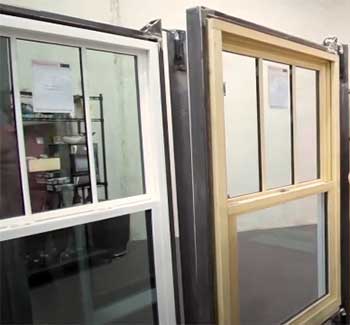
Windsor’s Pinnacle and Legend series caught my eye for their fiberglass options, which are marketed as tough and low-maintenance, much like Pella’s Duracast.
I found Windsor’s frames to be sturdy, with a similar lifespan to Pella’s, but their air infiltration rate (around 0.15) is slightly better than Pella’s 0.18.
However, Windsor’s design options felt more traditional, lacking the sleek, modern vibe of Pella’s black or bronze finishes.
Windsor’s pricing is about 10-15% lower, starting around $800 per window installed, but their customization options were limited compared to Pella’s precise sizing down to a quarter inch.
For me, Pella’s contemporary style and color variety won out, though Windsor’s a great pick for classic homes.
- Pella Impervia Vs. OKNA Windows
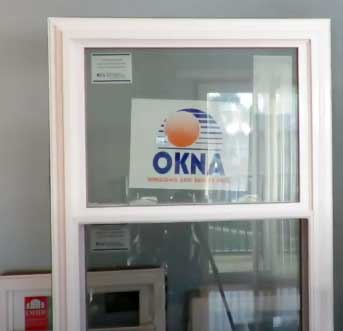
OKNA’s 800 Series fiberglass windows are a serious contender, especially for energy efficiency.
Their U-value can hit as low as 0.20 with triple-pane glass, slightly better than Pella’s 0.22, and their air infiltration rate of 0.01 is among the best I’ve seen.
OKNA’s frames felt rock-solid, but their designs leaned functional over stylish, with fewer color options than Pella’s vibrant palette.
Price-wise, OKNA is a steal, often 20% cheaper than Pella, around $700-$800 per window installed.
The downside? OKNA’s warranty (lifetime on frames, 7 years on glass) isn’t as generous as Pella’s, and their customer service has mixed reviews. I chose Pella for its design flair and reliable support, but OKNA’s a budget-friendly alternative if energy efficiency is your top priority.
- Pella Impervia Vs. Crystal Windows
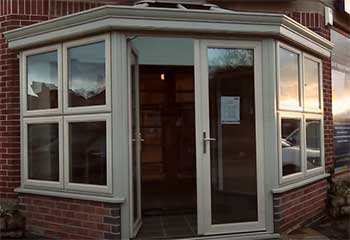
Crystal Windows’ Series 5100 fiberglass line is aimed at budget-conscious buyers, with prices starting around $600 per window installed—nearly half of Pella’s cost.
Their fiberglass is durable, handling harsh weather well, but the frames felt less substantial than Pella’s, and their U-value (around 0.30) lags behind Pella’s triple-pane models.
Crystal’s designs are clean but basic, with limited color and grille options compared to Pella’s customizable look. I also heard complaints about Crystal’s lead times and installation quality, which made me nervous.
Pella’s premium feel, robust warranty, and modern aesthetic made it the clear winner for me, but Crystal’s a solid choice if you’re pinching pennies.
Which Brand Wins?
Pella Impervia stands out for its sleek, modern design and versatile customization, making it perfect for homeowners like me who want style and performance. Windsor offers a strong alternative for traditional homes at a lower price, while OKNA excels in energy efficiency and affordability.
Crystal is the budget pick but sacrifices some quality and design flexibility. Your choice depends on your priorities—Pella won me over for its balance of durability, aesthetics, and long-term value, but all three brands have their place depending on your needs.
Frequently Asked Questions (FAQ)
In my experience, yes, they’re excellent. The fiberglass frames are incredibly durable, standing up to extreme weather without warping or fading. The energy efficiency is top-notch, especially with triple-pane glass, and the sleek design elevates any home. That said, the higher price and occasional installation hiccups are worth considering. If you want a premium window that looks great and saves on energy bills, Impervia is a solid choice.
Pella Impervia and Marvin Essential (formerly Integrity) are both fiberglass, but there are key differences. Pella’s frames are sleek and modern, with more color options like black and bronze, while Marvin leans traditional with fewer colors. Marvin’s frames feel sturdier, with a lower air infiltration rate (0.05 vs. Pella’s 0.18), and they offer triple-pane glass across more styles. Pella’s pricing is about 15% higher, but its custom sizing and contemporary design gave it the edge for me.
Pella Impervia windows are made from a proprietary fiberglass called Duracast, designed for extreme durability and low maintenance. They come in styles like double-hung, casement, awning, and sliding, with a sleek, modern look and options like triple-pane glass for energy efficiency. They’re built to handle harsh weather, from freezing cold to coastal salt, and offer a limited lifetime warranty on the frame. Perfect for homeowners wanting style and performance.
Some users, including me, have had minor issues with Pella Impervia windows. The weatherstripping can stick, making windows hard to open, though this is often fixable under warranty. Hardware, especially the standard white handles, can scratch easily. Installation quality varies depending on the contractor, with some reporting messy or sloppy work. The frames, while durable, have been called flimsy by some pros compared to competitors like Marvin. Lastly, the high cost can be a barrier for budget-conscious buyers.
Conclusion: Pella Impervia Windows Are Worth It
After living with Pella Impervia windows, I can confidently say they’re a smart investment. Their durability, energy efficiency, and stunning design make my home feel like a showpiece while saving me money on bills.
Despite the higher cost and occasional installation quirks, the pros outweigh the cons. If you want windows that look amazing, perform like champs, and last for decades, Pella Impervia is the way to go. You won’t regret it.
